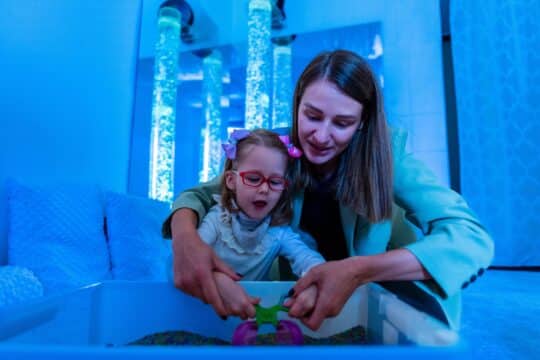Creating a healthy classroom climate means taking the time for teacher wellness and your own social and emotional well-being. Most teachers spend the majority of their day taking care of others, so the thought of doing anything for yourself usually gets left on the back burner. However, if you want to create a happy learning environment – one that supports a positive space for you and your students – then you need to make teacher wellness a priority. Here are five ways to help you create a thriving, healthy classroom atmosphere.
Use Teacher Wellness to Keep Everyone Healthy
In order to have a healthy classroom, you must have healthy students, and the best way to ensure your students’ health is to teach them all about health and hygiene. From how to wash your hands to the nutritious foods that help you from getting sick, children need to learn how to maintain their health. They also need to learn how to keep the classroom clean in order to minimize spreading germs. In addition to the students keeping healthy, you also need to be healthy yourself. That means getting enough sleep and exercise, as well as eating the right foods to help you ward off any infectious diseases and germs that may be lingering in the classroom.
Build a Classroom Community
Another effective way to create a healthy classroom climate is to build a sense of community within the classroom. You can do this by connecting to your students, as well as having students build connections with their peers. Building a sense of community creates a learning space where students feel safe and welcome. Through morning meetings and team-building activities, students learn more about one another, which helps to create a strong bond within the classroom. A sense of community can also help you as the teacher, because when students get along, that means fewer issues dealing with classroom discipline.
Get Students Up and Moving
Start your day with movement, whether that means stretching next to your bed or going for a jog before work. When you wake up and move, it gets your day going in a healthy, happy way. Continue your day by having your students get up and move, too. Studies have shown that the more active you are, the better your focus will be. Studies have also shown that fidgeting can help improve your focus. So if you see students fiddling around in their seats, then you know that it’s helping them improve their focus. Another idea is to have students (as well as you) take brain breaks – small 10-minute breaks of short body movement in between lessons or classes. When you keep your body moving and are not sedentary throughout the day, you’ll increase the oxygen to your brain, which is a great way to boost your body and brain health.
Create a Shared Vision
You may have a vision of the kind of climate you want in your classroom, but that vision may not align with your students. For example, your personal vision may be to have a social-emotional healthy classroom environment where all students thrive, while your students’ vision may be something completely different. Take the time to talk with your students about how they would like the classroom climate to be. Tell students your own personal vision for the classroom, then have each individual student discuss what their vision is. Once you’ve discussed your visions with the class, then you can create one shared vision together. According to Peter Senge and the Learning Organization, a shared vision must come from a personal vision first; then the individual is more likely to be committed to the share vision.
Know Your Role as a Teacher
Many teachers find it a great challenge to create a social-emotional safe environment for their students while keeping their role as a leader, mentor and class disciplinarian. There’s a fine line that teachers do not want to cross when trying to balance between having a relationship with their students and keeping their role as a leader. However, you must never relinquish your role as a teacher – you must find the right balance between being an authoritarian and having a caring relationship with your students. Take the time to get to know your students on a personal level, because it will help you gain respect, but also do it in a way where students are aware of your role.
The bottom line is: in order to create a healthy classroom climate, you must not only take care of your students, but you must take yourself as well. Taking the time for teacher wellness, establishing a classroom community, creating a shared vision of what you want your classroom climate to be like, as well as knowing your role as a teacher, will all benefit you and your students. The amount of time and effort this takes will all be worth it in the end when you have created a positive classroom atmosphere where all students are thriving.




